The benefits of play behavior in the development of foals
By: Nestor Imberti Posted: 05/08/2022
Play in young animals often mimics adult behavior that is essential for survival.
In the case of horses, as herd animals that prefer to live in social groups, they need to socialize with members of their own species from their birth. And what better way to start than playing.
From the moment foals arrive in the world, the relationship with their mother is the first one they experience and play behavior is quite solitary. However, after the first month youngsters begin to socialize with other foals.
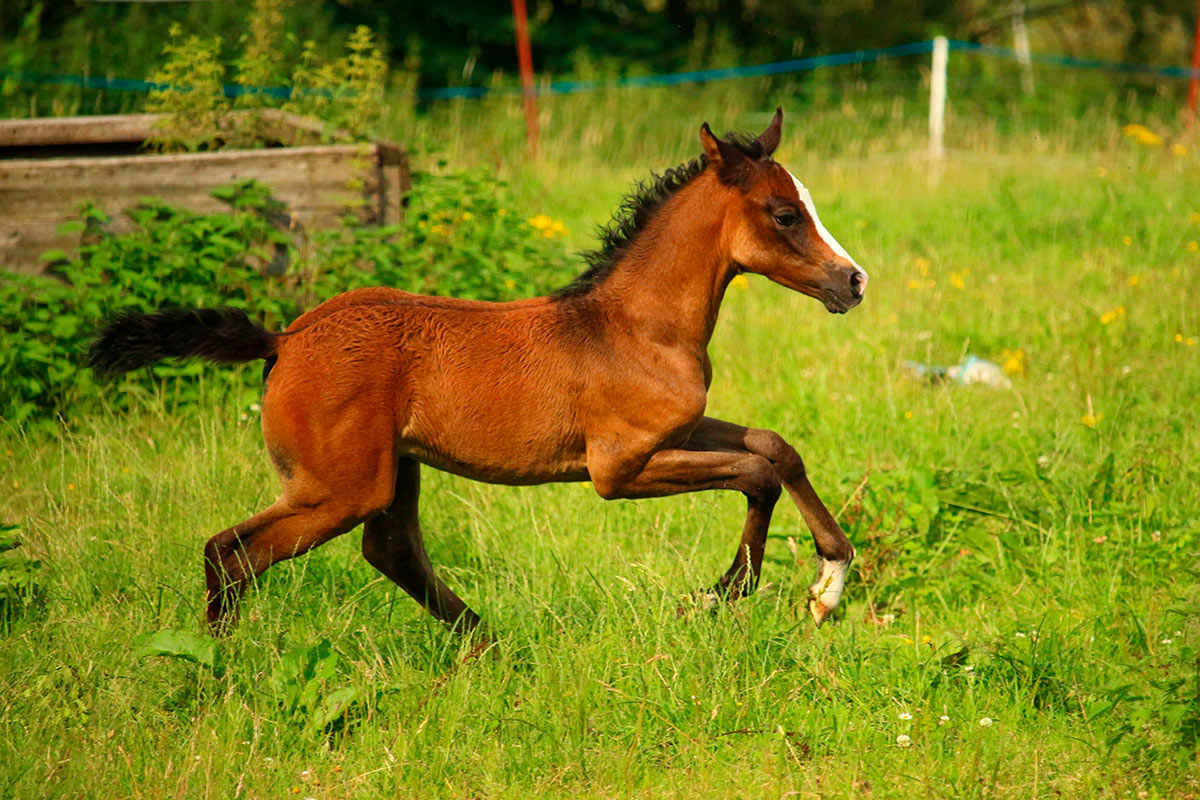
In addition to building social relationships, play behavior serves several functions such preparing the animals for their adult life and practicing survival skills.
Running, bucking and play fighting will help foals practice these skills for the future: running away from a predator or a potential danger.
Besides, this type of recreation allows the foal to develop locomotive skills and enhance their cardiovascular and musculoskeletal fitness.
In short, we should facilitate natural play in foals and avoid social isolation.
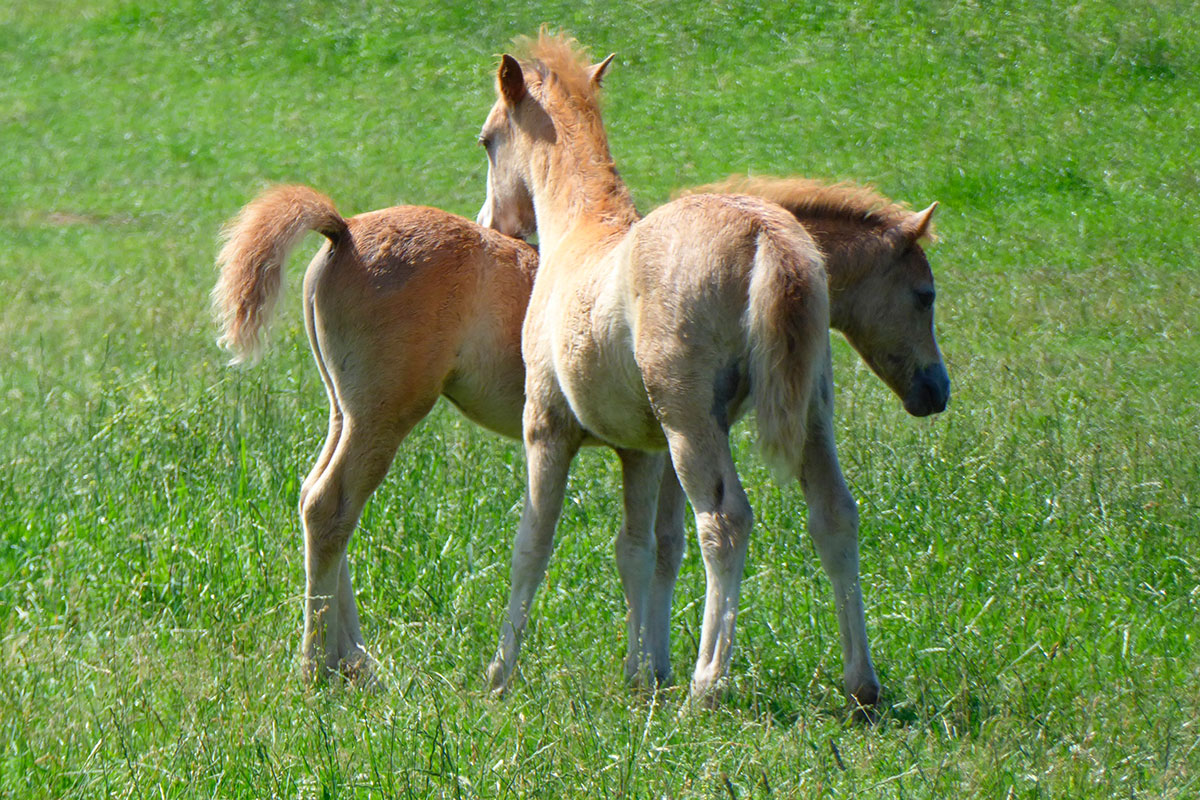
Would you like to be part of a group with an equestrian soul?
Join the Ampascachi Community. Obtain exclusive benefits for your holidays.
We tell you how to start, train and take care of your horse.
Interviews with direct providers of riding tours around the world.
Opinions of outstanding equine scientists and personalities in the equestrian sport world.
Play behavior and social relationships in horses
Let's talk first about the relationship between play behavior and socialization in foals.
Socialization helps the foal integrate into a herd environment and learn to communicate with other horses. This process is progressive from birth and continues into adulthood.
The first month of a foal’s life is characterized by its relationship with its mother and no contact with other horses. Nursing, sleeping and resting take most of its time. Nursing bouts are typically short, lasting approximately 1 to 1.5 minutes.
The rest of the time foals play with their mother, sniff in order to explore the world, nibble a little grass and they may even eat their mother's feces.
Foals of this age are particularly likely to play with the mare’s tail and mane. The mare is generally tolerant of this behavior.
Although socialization is very limited at this stage, according to several authors (Tyler, Keiper, Boyd), after two weeks foals begin to interact with their mother’s friends.
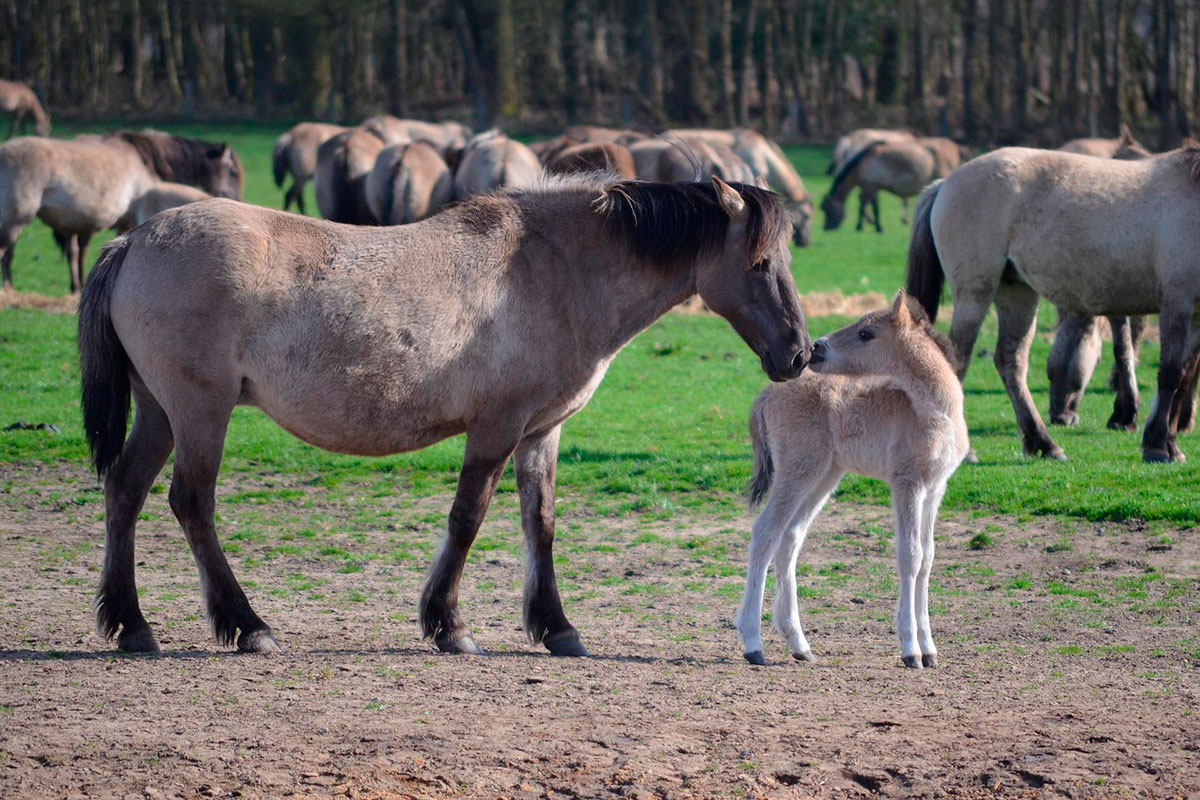
From the second month the foal begins leaving its mother’s side more frequently, often to interact with other members of the herd. It is between the second and third month when they spend most of their time playing with other foals.
The amount of time spent in play peaks during this period and is the same for colts and fillies. However, fillies engage in more running, jumping, and bucking play, while colts engage in more play that mimics combat.
Foals learn the boundaries of how roughly they can behave toward their peers. For example, a colt that bites a filly too hard is likely to be kicked.

Mutual grooming, also called allogrooming, peaks at this time. Equids allogroom by using their incisors to scratch and gently bite the skin of the withers, neck, and crest of their grooming partner.
And finally, “snapping” peaks during socialization. This behavior consists of retracting the commissure of the lips and making rapid up-and-down movements of the mandible. Snapping occurs when another herd member walks past the foal or when the foal approaches an unfamiliar herd member.
Four months of age is the period of stabilization and developing independence. Play behavior steadily decreases and foals spend more time grazing and eating fodder. While nursing becomes less frequent, it still occurs until foals are weaned, generally at 6 months of age.
At eighth months of age the juvenile phase begins, with the definitive weaning of the foal. It is the best time for cognitive learning. Also, social interaction with other foals increases during this period.
Play and exploratory behaviors will increase as the months go by. It is the time when colts develop their protective role.
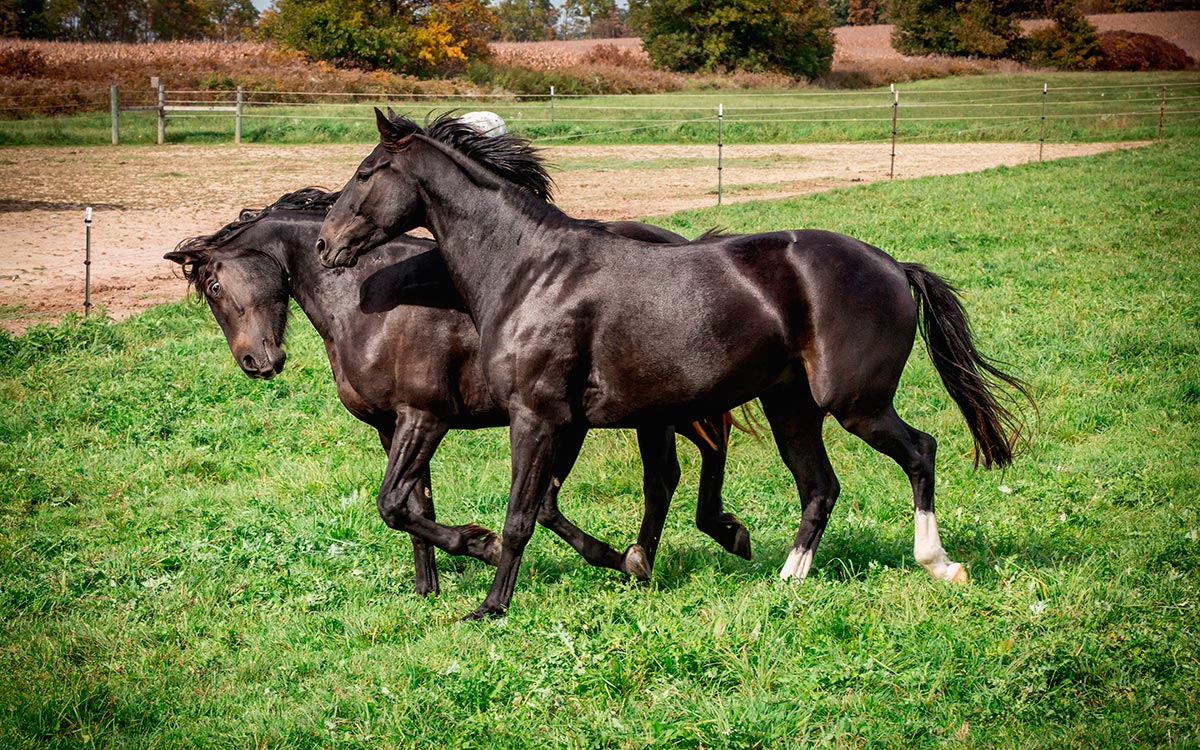
Four- and five-year-old horses are considered adults. Socialization among the members of the herd will continue to exist and it’s at this time when humans begin to play a significant role.
Subscribe to the Ampascachi Community and obtain benefits and exclusive content. Furthermore, we offer free advice on horses and equestrian tourism.
The importance of play behavior in the muscle and bone development of the horse
Bone tissue is one of the largest in the body. The major functions of the bones are body support, facilitation of movement, protection of internal organs, storage of minerals and fat, and hematopoiesis.
That is why it is very important to maintain their quality, and play in a foal’s early life helps to improve that quality.
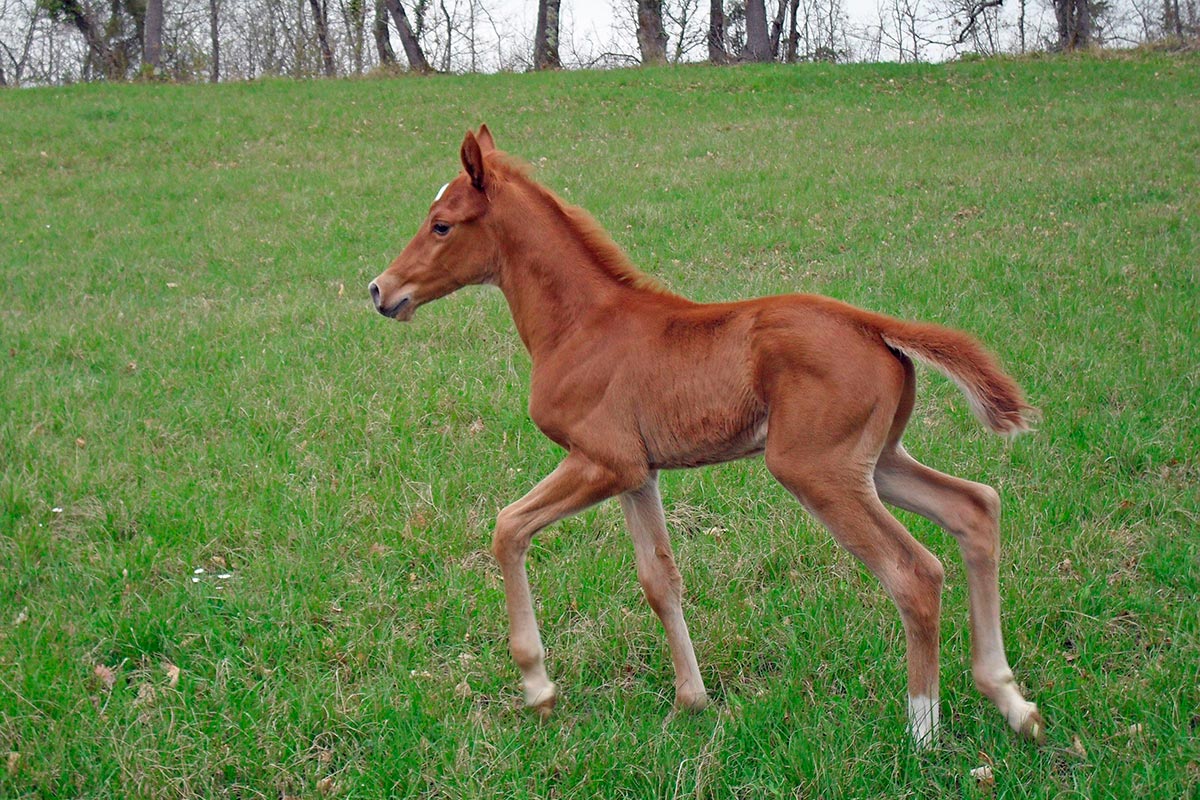
Chris Rogers is an Associate Professor in the School of Veterinary Science at Massey University in Palmerston North, New Zealand.
These are some of the conclusions of his studies:
- By building up strong, resistant tissues through natural play, horses have a better chance of becoming “sustainable” athletes later in life.
- Spontaneous play optimizes bone development and reduces the risk of future injury to both muscles and bones.
- Early exercise (in the form of play) provides a positive platform for good metabolic programming, that is, it helps reduce the risk of Equine Metabolic Syndrome, specifically diseases such as diabetes.

A common theme they noted was that the play activity had a direct relationship to a healthy mechanostat.
Bone mechanostat refers to the way mechanical loading on bone affects its structural mass and architecture, creating, essentially, more sustainable bone over the long term.
In the case of vertebrate animals, bone mechanostat is a feedback mechanism that regulates the stiffness of their trabecular and cortical structure. In this way, the accumulation of minerals and physical activity are essential for bone structure, and in the form of play it can be reinforced.
In play, foals have bursts of intense, high-energy movement with various bodily positions placing particular kinds of strain on the musculoskeletal system that they wouldn’t get from just normal locomotion.
In natural settings, this would allow them to be prepared for immediate needs to flee predators, but also to sustain the strains of physical activity related to reproduction.

And, most importantly, we must avoid confining the foal as much as possible, if we want it to be healthy.
Rogers concludes that play allows horses to develop social skills, as we have discussed in the previous section. All this contributes to their welfare.
According to Rogers:
"From a welfare point of view, play appears to be hard wired as a necessary activity, so inability to perform play activity may be a compromise of welfare."
Conclusions
It is clear that play is a fundamental part of a foal’s adequate physical development and that it helps them socialize with the rest of the herd.
Thanks to play behavior, foals develop their musculoskeletal system and learn to react to dangerous situations.
Depriving horses of play opportunities, keeping them confined in small areas or separated from other horses their age is a mistake we should avoid.
Aware of that, we must help our horses to be happy with the herd.
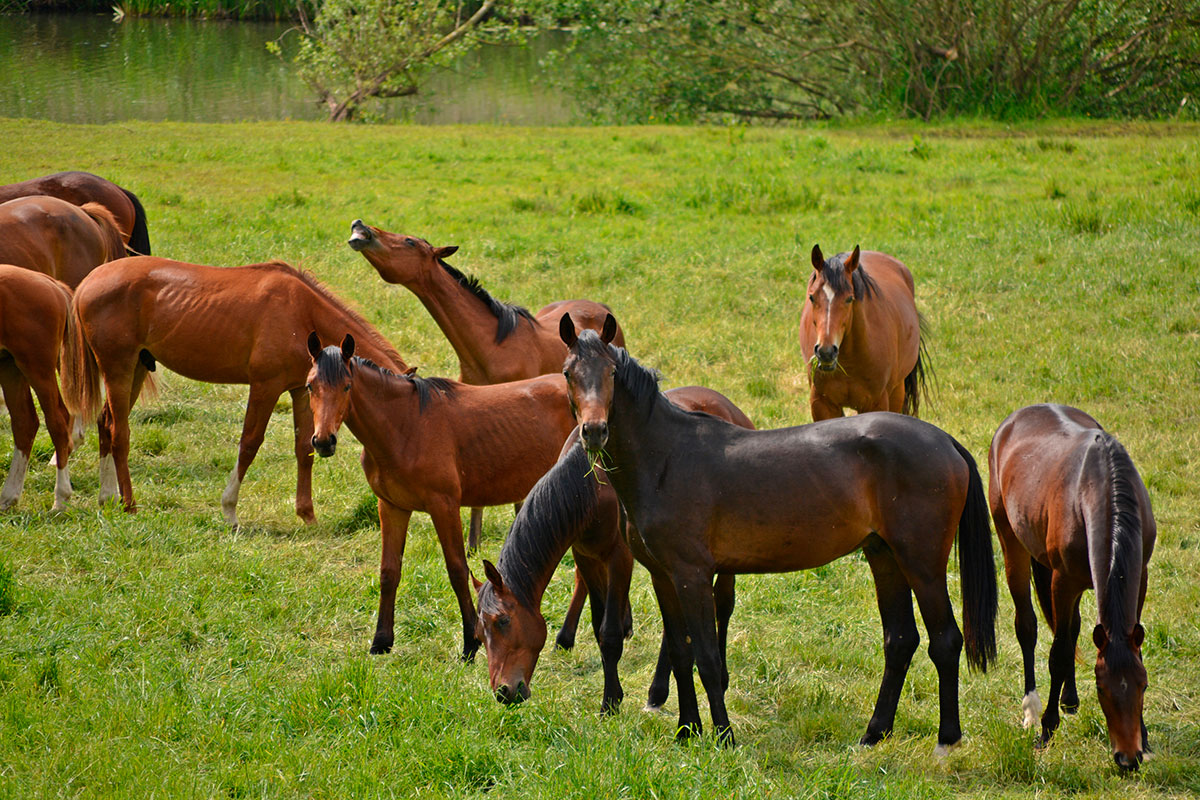
Would you like to delve deeper into the world of horse training?
Download our free guide on Horse training step by step. There we tell you everything we have learned about horse training in more than 25 years of experience.
~
THIS COULD ALSO BE INTERESTING

How to understand the welfare of horses
Discover the evolution and implementation of the 5 domains model for animal welfare applied to equids. Assess the well-being of your horse based on his physical and mental health.
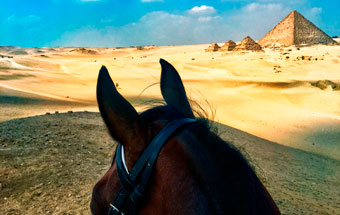
Horse riding tours in Egypt
Horse riding tours in Egypt in the Valley of the Kings, to see the temples of Karnak, the ruins of Thebes & ride in the majestic Nile Valley.
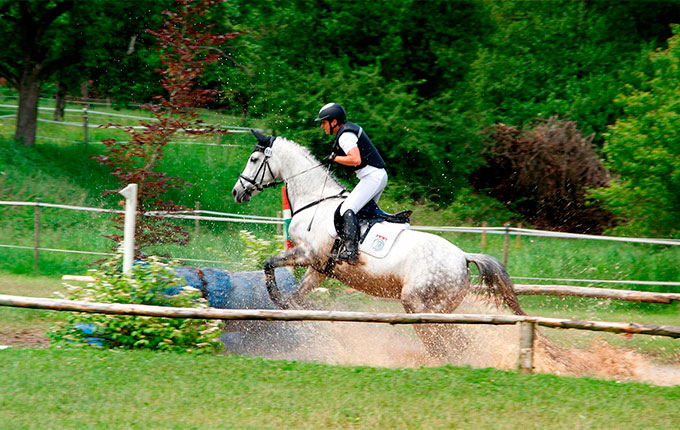
The equestrian discipline of TREC: the horse-rider combination
Discover TREC, the equestrian discipline that tests the rider’s navigational competence, control of horses and the horse–rider relationship whilst crossing unfamiliar country.
~
WHAT IS YOUR OPINION? LEAVE A COMMENT
Planning your horse riding holidays?
Join the Ampascachi Community. You will get exclusive advantages and guidance for your next horse riding holiday.


 German
German French
French Spanish
Spanish